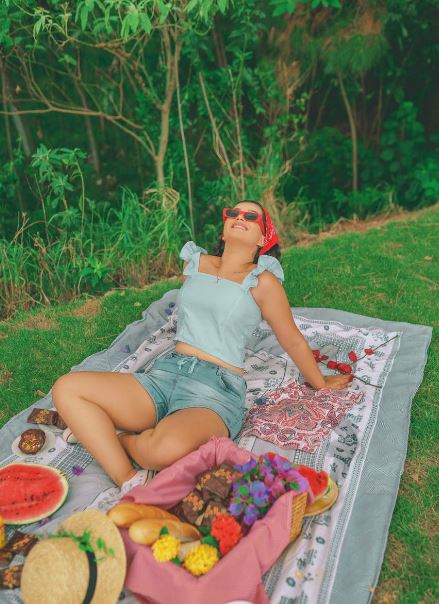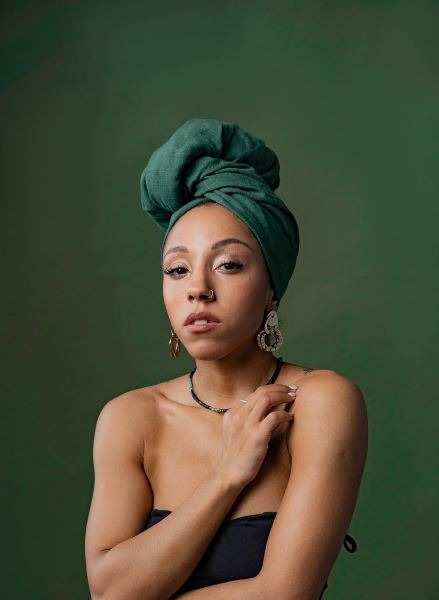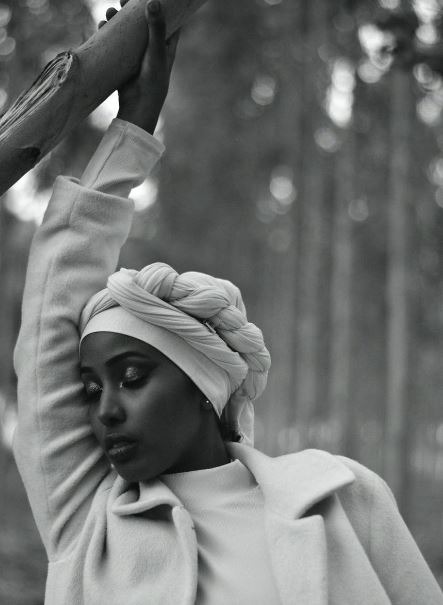Whether you’re new to head wrapping or a seasoned pro, you may be wanting to know: does the length of the head wrap matter? We’re here to dispel some head wrap myths and explain why the length of your head wrap may (or may not) matter based on your preferences and hair volume.
We’ll make it simple for you and make you understand why you should (and can) wear a head wrap, and how to choose the correct scarf size for your head wrap.
What Is the Purpose of Wearing a Head Wrap?
To Provide Protective Styling
Head wraps not only keep your hair in place but also function as protective accessories, keeping your hair secure from drying textiles. It’s best to put a satin (or similar fabric) covering under the wrap to prevent breaking and improve moisture retention.
To Express Yourself
Many people use head wraps to exhibit their uniqueness. However, they are also a convenient method to look fashionable and protect your hair in various eye-catching ways.
To Commemorate Your Heritage
As the natural hair market continues to grow, many people have come to appreciate their natural curls and see head wraps as a source of pride. They are also worn to commemorate culture, old heritage, and traditional festivities.
To Avoid Hair Styling During the Day
When you’re on the go, head wraps are a terrific method to keep your curls in check.
Understanding Your Head Wrap’s Length
Your particular fit choices determine your wrap’s length. And while there are a variety of head wraps available, ranging from firm to stretchy and drapey, each wrap has a different length. Here are some samples of head wrap scarves and how their lengths differ:
Rectangular Scarf Measurements
A rectangle scarf typically measures 40 inches broad and 70 inches long. A slim scarf that isn’t too thin can be 22 inches by 70 inches – perfect for using as a necktie, tying around a bag handle, or just wrapping around the shoulders.
Scarves that are knitted or crocheted and hang to the waist are approximately 64 inches long by 6.5 inches wide or 52 inches long and 8.5 inches wide. Small rectangular shawls that wrap once around the neck and then dangle to the waist or hip are approximately 70-78 inches long and 27 inches wide.
Infinity Scarves Measurements
You may use knitting to create a little infinity scarf that measures around 58 inches by 7 inches wide.
You can produce a tiny infinity scarf in woven cloth that measures 63 inches around and 12 inches wide; a larger infinity scarf can be constructed in woven cloth that measures 70 inches long and 30 inches wide.
You can produce a skinny infinity scarf with a length of 76 or 78 inches and a width of 7 inches. The width can even be as little as 3 inches or even 2 inches, in which case the construction will be tube-like.
They are generally worn as a necktie and as a hair decoration. Tie it around the handle of a handbag for a great finishing touch. A 40-inch length will give you a short, narrow scarf.
A large blanket scarf is 94 inches by 45 inches wide, whereas lace scarves are 12 inches wide and 58 inches long or 6 inches wide and 64 inches long.
Triangular Scarf Measurement
A classic triangle scarf measures 50 inches across with 30-inch sides. You can shorten the sides to roughly 20 inches for shorter lengths and lengthen them to 40 inches for longer lengths.
Square Scarves
Square scarves begin at 21 inches square. They are available in various sizes, including 32 inches, 35 inches, 39 inches, 48 inches, and 50 inches. Thirty-five inches is a good size for a square scarf.
The 21-inch-square scarf, on the other hand, is more akin to a handkerchief. A neckerchief is the name given since it is tied around the neck.
The Arab head scarf, known as Shemagh (Keffiyeh) Scarf, is a 43-inch square scarf, whereas a bandana is a 21-27-inch square scarf.
What Does the Scarf Size Have to Do With It?
While a 40 by 72-inch head wrap can cover the sides of the head, it is also excellent for a knot, turban twist, and wrap knot, providing a variety of designs that wrap around your complete head.
Depending on the diameter of your head, you may want to go with a somewhat shorter length, such as a wrap that is 22 by 65 inches. However, if you have longer, curly hair that you want entirely tucked inside the wrap, a 72 inch may be a better fit.
How to Choose the Correct Scarf Size
Though this depends entirely on the style you’re going for and the amount of hair you have, a fit rule of thumb is to acquire a scarf long enough to wrap across your head twice, or you won’t be capable of achieving certain styles. This guide to beach head scarves can help you with this.
How to Stop Your Headwrap From Slipping
Making sure the wrap is secure and the tails are tucked in pretty neatly after you finish is among the things that work best. You can also use a wig hat to give the scarf something to grip and maintain it in place before wrapping it. Another excellent suggestion is to experiment with a velvet wig hold to keep your scarf from slipping off your hairline.
Another way of preventing your scarf from slipping is learning how to tie it correctly.
How to Prevent Wrapping Damage
Non-silk scarves can absorb moisture from your hair while wrapping it, leaving it brittle and dry—the polar opposite of protected. Before wrapping your hair, consider braiding it down to keep it from “grabbing,” then slip on a silk scarf or satin-lined cap as a protective layer to keep moisture contained while it’s wrapped.
Finally, form and wrap fabric play an important influence on the aesthetic you want to accomplish. Satin or silk wraps, for example, may not remain in place as well as nylon, cotton, or polyester. So, go forth and experiment with different head wrap fabrics and sizes to see which works best for the look you’re going for.




